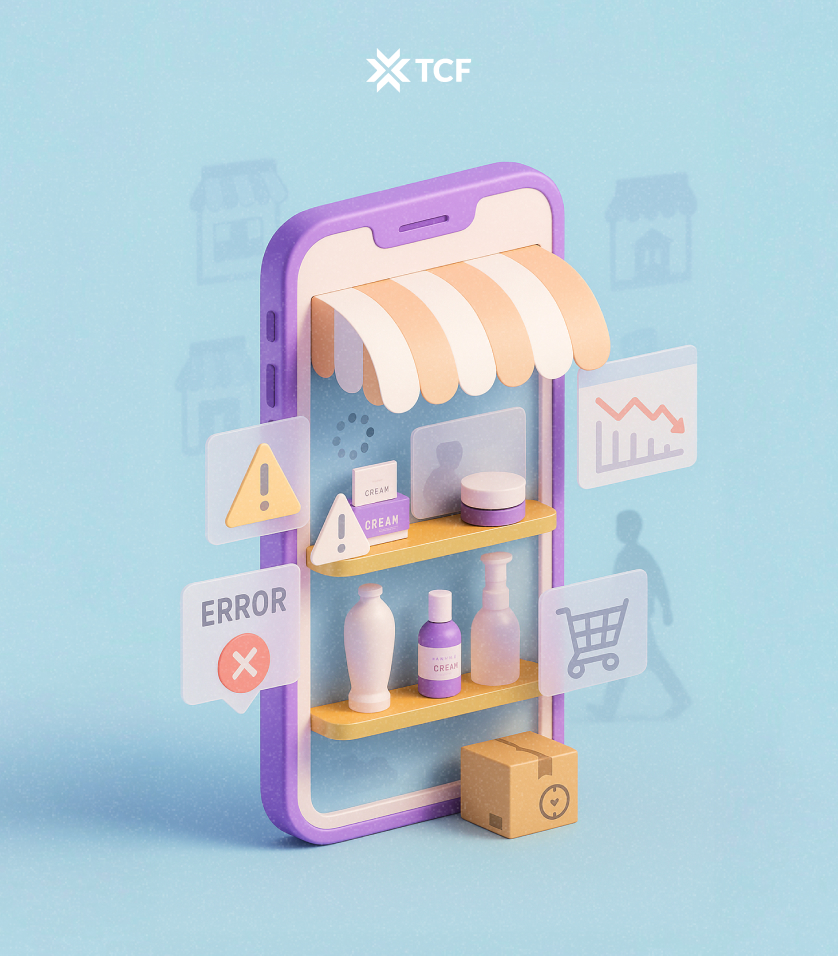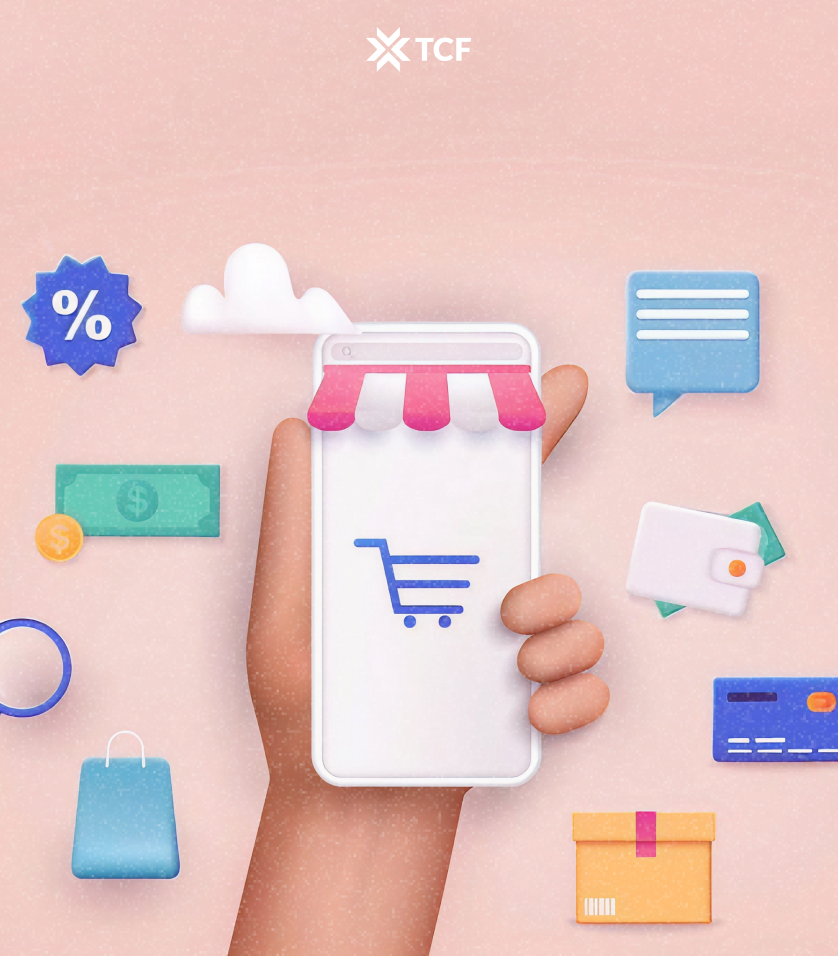On paper, beauty ecommerce is thriving in 2025. New launches every week. AI doing shade matching. TikTok selling out lip glosses in 48 hours.
But behind the scenes? You’re juggling rising ad costs, underwhelming retention, platform drama, shipping delays, and a customer who expects eco-friendly packaging, personalized routines, and a flawless try-on filter that somehow doesn’t collect any of their data.
If you’ve felt like it’s getting harder to scale without burning out your margins or your team, you’re not imagining it.
[[cta5]]
What’s Holding Beauty Ecommerce Brands Back
It’s not one thing, it’s all of it. Between rising ad costs, shifting platforms, and constantly changing shopper behavior, beauty ecommerce is facing pressure on all sides. Here’s what’s dragging growth, killing margins, and forcing even the best teams to rethink their playbook.
1. Paid Acquisition Is Too Expensive for Lip Balm Economics
Customer acquisition costs leveled up. Meta and TikTok CPMs keep rising, tracking keeps breaking, and you’re expected to scale a $14 product with the math of a luxury brand. Even when the creative’s strong and the ROAS looks decent, margins disappear fast once you add in shipping, packaging, and fulfillment.
What used to be a profitable playbook - launch, test ads, optimize, scale - is now a balancing act with razor-thin room for error. And brands that built their entire growth engine on Meta are finding out the hard way that performance alone isn’t enough when customer expectations and platform rules keep shifting.
You don’t need to quit ads, but you do need a plan that makes them worth it. The era of lazy scaling is over.
2. TikTok Isn’t a Strategy, and Instagram Isn’t a Guarantee
Once upon a time, you could ride a trending audio to a sold-out restock. Now? TikTok is crowded, creators are burned out, and your reach is only as good as your last algorithm mood swing. Instagram’s organic engagement has flatlined for most beauty brands unless you’re pouring money into Reels or giveaways.
Social media used to be the launchpad. Now it’s the minefield. Between disappearing visibility, disappearing creators, and disappearing virality windows, relying on one or two platforms to drive awareness or conversions feels riskier than ever.
Socials are still part of the puzzle, but it’s no longer the whole strategy.
3. Sustainability Expectations Keep Rising, but So Do the Costs
Shoppers want recyclable packaging, ethically sourced ingredients, carbon-neutral shipping and they want it all delivered by tomorrow, wrapped in tissue paper, with a handwritten note.
At the same time, regulators are tightening what brands can say about their sustainability practices. That means even the most well-intentioned claims now need documentation, verification, and a backend that can actually track everything from ingredient origin to disposal.
For indie brands and DTC teams juggling tight margins and limited resources, meeting new sustainability standards adds another layer of complexity to already overstretched operations. And it’s turning sustainability into a full-time job.
The demand for sustainability has to be balanced with reality.
4. Everyone Wants Personalization, No One Wants to Share Their Data
Beauty is personal by nature: skin type, undertone, sensitivity, texture, routine. Shoppers expect brands to get it right. In 2025, that means shade matchers, product quizzes, dynamic bundles, and personalized recommendations on every channel.
The problem? The data needed to power all of that is getting harder to access. Privacy rules, cookie deprecation, and low opt-in rates make it tough to collect the kind of insights that actually move the needle. Even when you have the data, making sense of it and turning it into something useful across platforms requires more tech and talent than most small teams have.
Customers need to feel like your brand sees them. That part’s still within reach.
5. Loyalty Doesn’t Look Like It Used To
Subscriptions used to be the golden ticket: predictable revenue, higher LTV, and a frictionless way to stay stocked. But in 2025, customers are harder to lock in. They’re skipping subscriptions, pausing orders, or bouncing after a single billing cycle. Part of it is financial, no one wants to feel locked into anything they might not finish. But it’s also behavioral.
Shoppers now have major commitment issues. They scroll past one routine and land on another. TikTok and Instagram make it easy to fall in love with something new every week, and even your most loyal customers might leave for the next trending serum, lip tint, or “dupe that’s actually better.” The sense of discovery often wins out over long-term brand attachment.
And even loyalty programs don’t hold much weight if they’re offering the same tired point-per-dollar model with rewards no one wants.
6. The “Worth It” Bar Keeps Getting Higher
Shoppers have significantly raised their standards. In 2025, every product competes with a viral dupe, a brutally honest review, and five alternatives in someone’s cart already. Even loyal customers will switch if something feels more effective, more aesthetic, or more values-aligned.
This is about perceived value. If your serum doesn’t come with proof, packaging, and a clear “why this over that,” it’s getting skipped. The same goes for makeup launches. Consumers want performance, but also a brand they can align with, a formula they trust, and ideally, a creator they already follow backing it up.
For brands, this means constantly re-earning trust and justifying every purchase, even for returning customers. You have to prove that you’re great, show it, and remind people why they picked you in the first place.
7. Too Much Revenue, Too Little Control
It’s tempting to chase scale through Amazon, Sephora.com, or regional marketplaces. And sure, they move units. But they also move the goalposts. Fees keep rising, margins keep shrinking, and your hero SKU can disappear from search the minute an algorithm hiccups or worse, when Amazon decides to launch a lookalike for $4 less.
Retail partners help with reach, but they come with their own set of rules: pricing restrictions, packaging requirements, delayed payouts, and no direct line to your customer. You get the sale, but not the data or the long-term relationship.
For many beauty brands, the real problem isn’t that marketplaces exist. It’s that they’ve quietly become the biggest channel in the mix, leaving DTC stuck in the back seat.
Not making you ditch retailers, but if you’re not building control into your own ecosystem, you're always one listing change away from a very bad month.
8. The Beauty Ecommerce Customer Experience Has Zero Room for Error
In 2025, beauty ecommerce is not competing on products alone. It’s competing on experience. From first click to unboxing, every step of the journey is a moment your customer is silently judging. And in an industry where trust and routine matter, a single misstep like slow shipping, broken pump, irrelevant follow-up email is enough to send them elsewhere.
What makes it harder? Expectations are now shaped by luxury brands, hyper-personalized DTC startups, and social media unboxings that set the bar unreasonably high.
If your brand can't deliver a seamless, delightful customer experience across mobile, support, packaging, and post-purchase you’re losing a repeat customer, a future referral, and the algorithmic momentum that comes with both.
Your 2025 Beauty Ecommerce Checklist for Staying Competitive
If you're tired of vague advice and ready to actually fix what's stalling your growth, start here. These are the moves smart beauty brands are making right now to stay profitable, relevant, and in control.
Fix What’s Bleeding Money
- Rebalance your channel mix: pull back on Meta and TikTok if CAC is unsustainable, and test affiliates, SEO, or influencer marketing instead.
- Use bundles, replenishment flows, and loyalty perks to increase AOV and LTV.
- Audit shipping, packaging, and fulfillment to cut silent margin killers.
Stop Relying on Algorithm Luck
- Build your own audience lists: SMS, email, or a private community where you don’t need an algorithm to get seen.
- Shift creator strategy toward consistency over clout, go for niche trust.
- Create evergreen content: skincare tutorials, how-to guides, and review-style videos that keep converting long after the trend dies.
Shift from Performative Sustainability to the Practical One
- Pick one or two sustainability improvements you can actually deliver on, like refillables or verified sourcing.
- Be transparent about tradeoffs (e.g. why glass over biodegradable plastic) to earn trust.
- Get your house in order for compliance: map out claim approvals, documentation, and what you'd need if regulators came knocking.
Deliver Personalization Without Creeping People Out
- Start collecting zero-party data through quizzes, post-purchase surveys, and loyalty program preferences.
- Use product builders or flexible kits to give a personalized feel without deep tech investment.
- Focus on relevance: personalization should not give Big Brother is watching you.
Rebuild Loyalty Without Traps
- Offer flexible reordering: skip-a-month, reminder nudges, or custom bundle setups.
- Turn loyalty into a feeling of access: exclusive drops, behind-the-scenes perks, early access.
- Design retention around product rituals and real education.
Prove You’re Worth It, Every Time
- Lead with what makes your product different: clinical data, key ingredients, real-life results.
- Use peer reviews and UGC instead of overly polished campaigns.
- Compare yourself to the “dupes”, don’t wait for someone else to control that narrative.
Take Back Control of Your Revenue
- Don’t let retail and marketplaces run the show: treat them as supplements.
- Build unique DTC experiences: limited editions, brand content, bundles they can’t get on Amazon.
- Recover margin by leaning into retention-friendly formats and reducing channel fees wherever possible.
Elevate the Beauty Ecommerce Experience
- Fix the post-purchase experience: Streamline tracking, returns, and support. Add thoughtful touches like usage guides or tutorial links to boost satisfaction and reduce churn.
- Make mobile flawless: Audit your mobile site regularly. Speed, intuitive navigation, and a smooth checkout flow directly impact conversion.
- Level up unboxing: Durable, on-brand packaging plus a small surprise (sample, note, exclusive offer) creates a memorable moment that drives repeat purchases.
- Turn support into a loyalty builder: Fast, human, and helpful responses turn issues into trust and make your brand feel personal in a crowded space.
Conclusion
Running a beauty brand in 2025 means playing a game where the rules keep changing faster than you can reformulate your best-seller. Between rising costs, platform instability, and shifting consumer expectations, the old playbooks won’t cut it. But that doesn’t mean growth is off the table.
Smart brands are scaling sharper. They’re owning their data, tightening their operations, and treating retention like the main event.
If the challenges in this guide feel familiar, that’s because they’re real. But so are the solutions. And the brands that adapt now? They’re the ones that’ll still be here next year. More profitable, more resilient, and a hell of a lot harder to knock off the shelf.
[[cta5]]






.png)


.png)


.jpg)

.jpg)